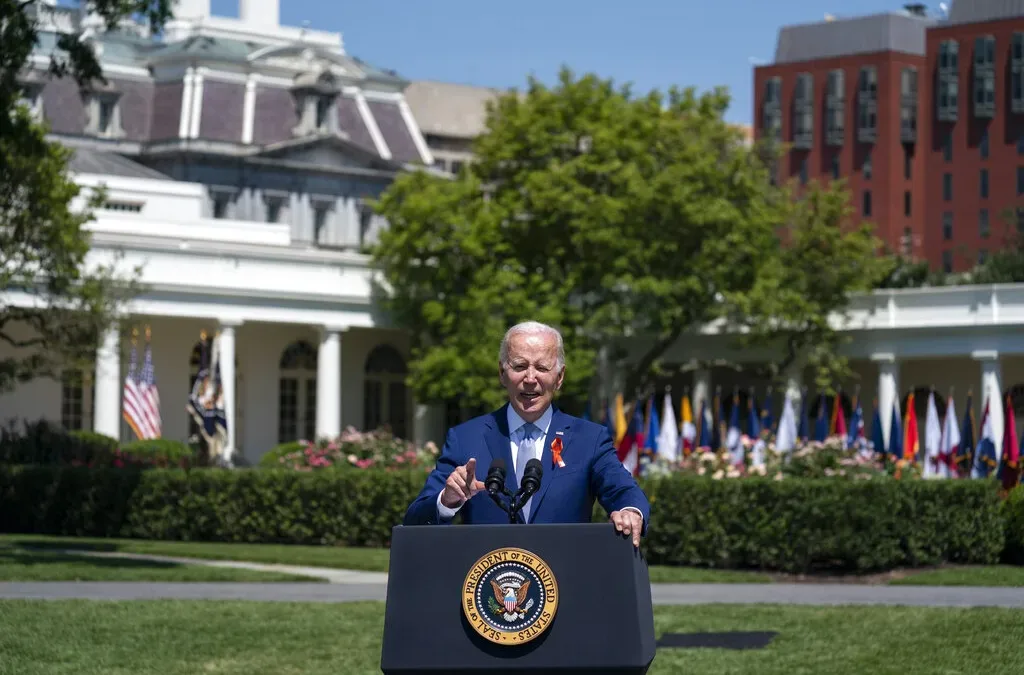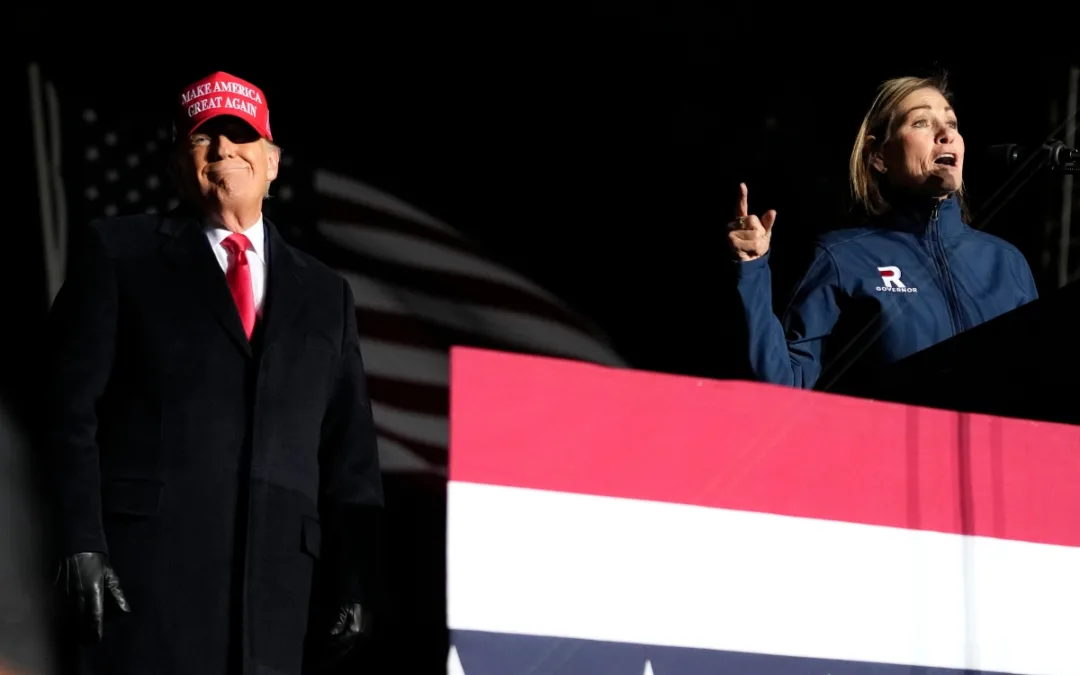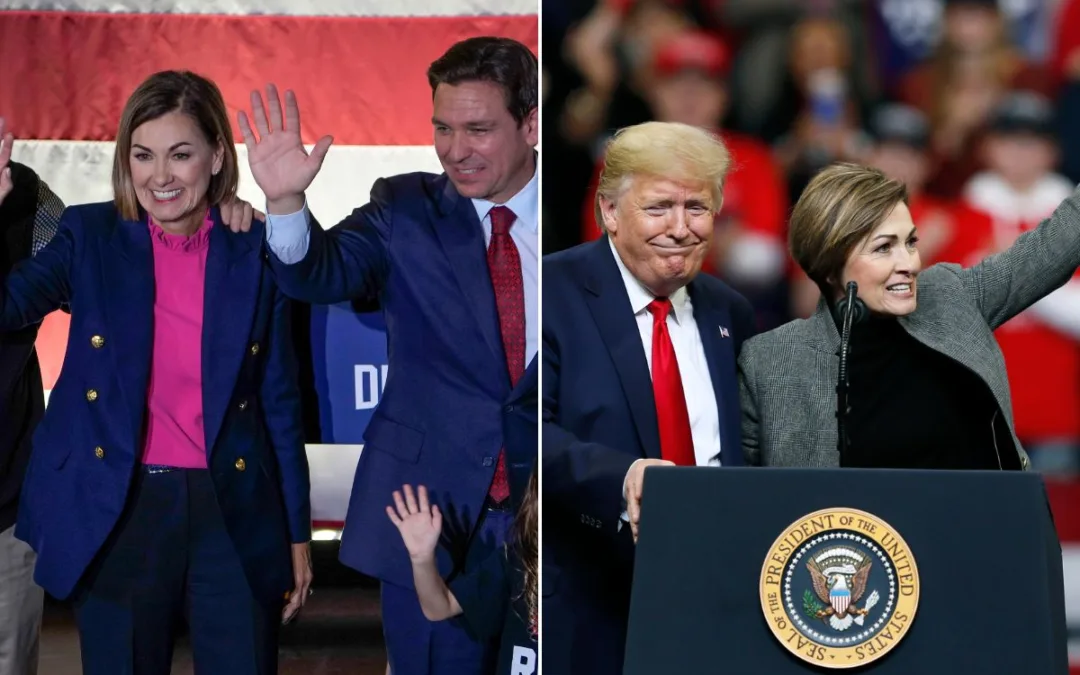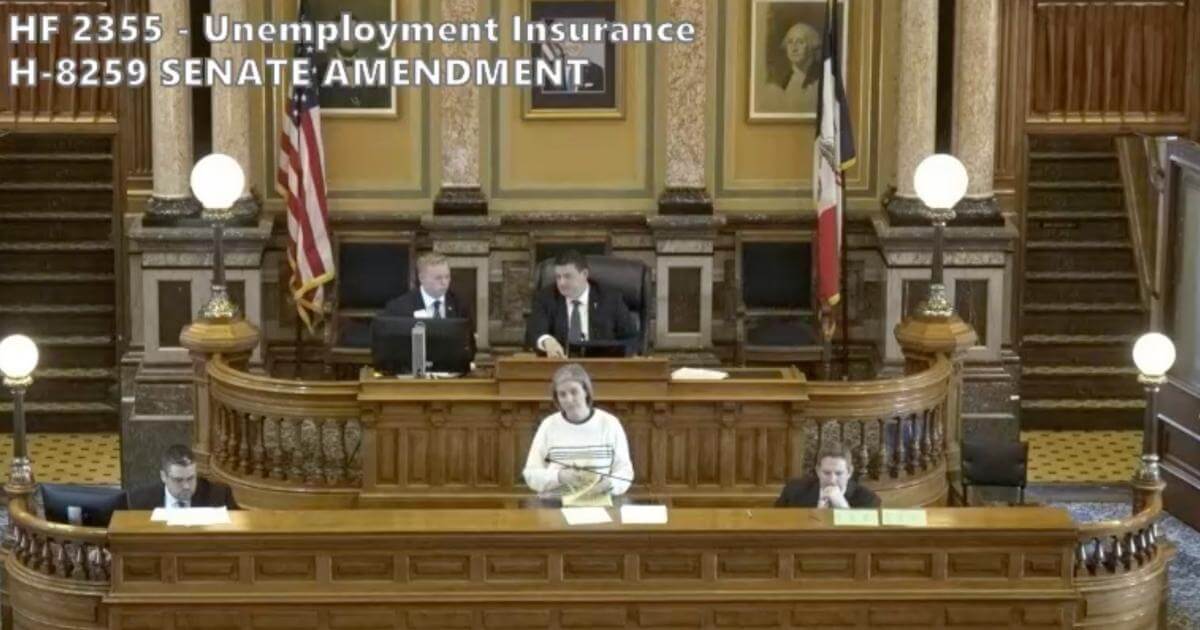
It’s been a banner two weeks for Iowa Republicans. Last Wednesday they saw Terry Branstad step down for his Chinese ambassador role, swore in Kim Reynolds as governor, celebrated it this Friday night and hosted Vice President Mike Pence at Joni Ernst’s Roast And Ride. And at every opportunity during it, Republicans have pointed out how it was their party to get several key female firsts.
“Tonight is an evening of breaking glass ceilings,” Republican Party of Iowa Chairman Jeff Kaufmann told the crowd at Reynolds’ inauguration party in a Des Moines hotel ballroom.
Republicans pointed to Joni Ernst as the first female federal official from Iowa (and the Senate’s first female combat veteran), Linda Upmeyer as the first female Speaker of the Iowa House and now Kim Reynolds as Iowa’s first female governor. It’s a record that’s particularly painful for Democrats, who have seen many women they’ve put up in elections fall short. Kaufmann, aware of that, delighted in rubbing in the Republicans’ accomplishments at this week’s events.
The party is certainly right to promote their historic achievements. It’s a big, quick shift considering just three years ago Iowa shared the dubious honor with Mississippi as being the only two states that hadn’t ever elected a woman as governor or to the U.S. House or Senate.
Democrats contend that the accomplishment isn’t as meaningful since those Republican women are pushing what they see as anti-women policies, especially when it comes to reproductive health. Still, both sides would likely agree that when it comes to simple inspiration, having women of either party in power is helpful to young women who can then better see themselves in leadership roles in their own careers.
But looking only at top Iowa Republican leaders overshadows a growing gender disparity they have further down in government.
Despite their big majorities in the Iowa Legislature, there are only ten female Republican legislators. That’s out of 88 total Republican-held seats. Nine of 59 House Republicans are female, while Amy Sinclair is the lone woman in the Senate Republican caucus, despite their 29-seat contingent.
Meanwhile, five of Democrats’ 19 senate seats are held by women, while 18 of 41 Democratic House seats are represented by women.
While the Democrats are at least closing in on gender parity, Republicans lag far, far behind. But how does this all compare to national statistics?
Nationwide, women make up 24.8% of state legislators. Iowa is a little behind the average with 22.0%.
Using recent data from the National Conference On State Legislatures (the numbers may have changed very slightly after a few special elections), 1,109 of Democrats’ 3,135 state legislative seats nationwide are held by women, or 35.4%. In comparison, 704 of Republicans’ 4,177 seats are held by women, or just 16.9%.
Iowa Republicans fall behind that disappointing national average with only a mere 11.4% female representation in their legislative caucuses. Iowa Democrats are a little ahead of their party’s national average with 38.3%.
At the national level, the continued dearth of female representation has produced embarrassing moments for the party. Repeated photos out of the White House showing President Donald Trump surrounded by all or nearly all white men during important bill signings can’t possibly help the Republican brand. The Iowa GOP will at least have multiple women in the forefront at their rallies and legislative press conferences, but the underlying gender disparity at the Statehouse is concerning.
What can be done?
Republicans brought in six new state senators this year by knocking off Democratic incumbents, all of them men. House Republicans were much better on this front, electing Shannon Lundgren, Jane Bloomingdale, Ashley Hinson and Kristi Hager for the first time. Sure, in targeted swing districts the parties are going to recruit whoever they think has the best shot, regardless of diversity, but you really have to wonder if there no were strong potential female candidates for those senate races. If the party won’t specifically recruit based on gender, then conservatives need better organized candidate training groups that specifically boost women.
Still, there’s always little scenarios where a Republican Party more focused on gender equality could step in. Take the upcoming special election for House District 22, where incumbent Republican Greg Forristall recently passed away. His wife, Carol Forristall, stepped up to try and serve out the remainder of his term. Local Republicans nominated Jon Jacobsen at a nominating convention instead.
Now, I don’t know internal Republican Pottawattamie County politics. Perhaps Carol Forristall wasn’t a serious person or candidate and Jacobsen was a clear choice with lots of potential. Perhaps not. But if they were relatively equal choices, this is a situation where a state party that cares about improving their 11% female legislator number steps in and nudges the local activists to nominate a woman.
Iowa Republicans have done a good job at promoting up their promising female leaders to statewide office. The problem, however, is that the bench they have to draw from in the future is getting smaller and smaller. Both Reynolds and Ernst originally served in the Iowa Senate before moving up. So if Republicans don’t want those two to be the last statewide leaders for the next few decades, they need to recommit to electing female leaders at all levels, not just at the top.
by Pat Rynard
Posted 6/4/17
Politics

Biden announces new action to address gun sale loopholes
The Biden administration on Thursday announced new action to crack down on the sale of firearms without background checks and prevent the illegal...

Biden cancels student loan debt for 2,690 more Iowans
The Biden administration on Friday announced its cancellation of an additional $7.4 billion in student debt for 277,000 borrowers, including 2,690...
Local News

No more Kum & Go? New owner Maverik of Utah retiring famous brand
Will Kum & Go have come and gone by next year? One new report claims that's the plan by the store's new owners. The Iowa-based convenience store...

Here’s a recap of the biggest headlines Iowa celebs made In 2023
For these famous Iowans, 2023 was a year of controversy, career highlights, and full-circle moments. Here’s how 2023 went for the following Iowans:...





